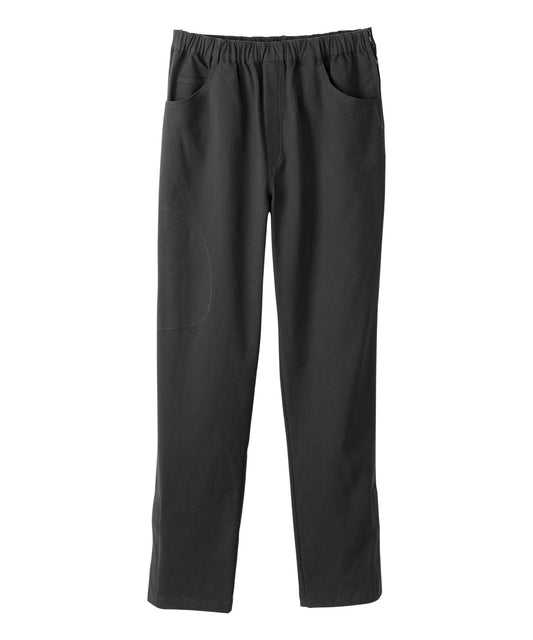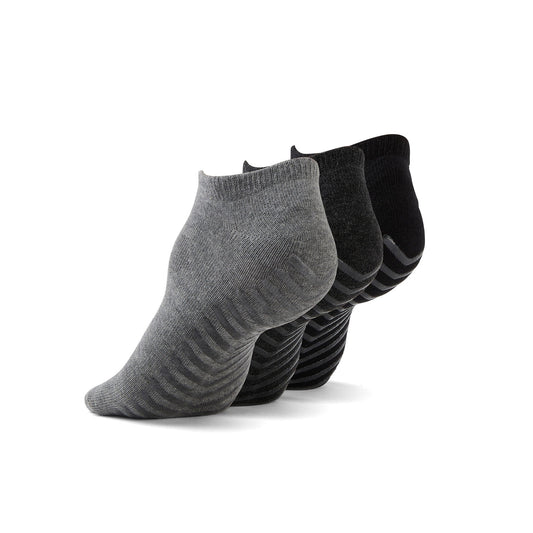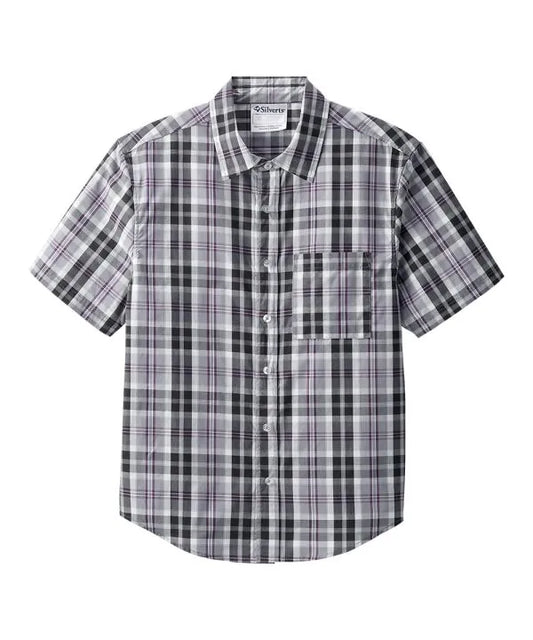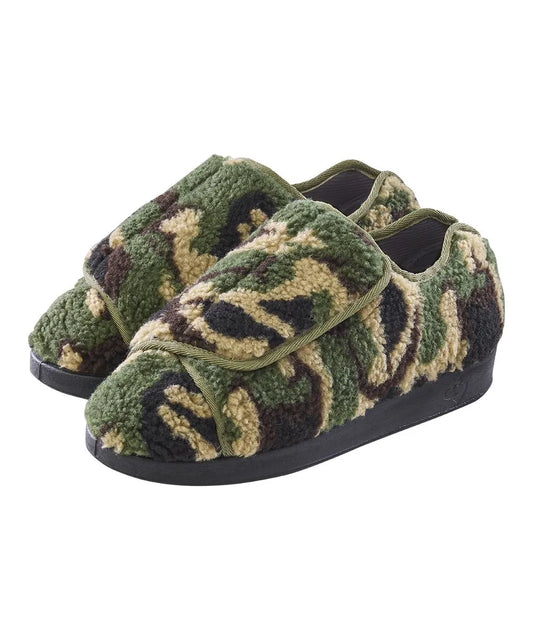Written and reviewed by Lourdes Duah
Massive clothing distributors don't usually consider those with disabilities in their design process. Someone without a disability might not think of buttons, zippers, or tight fits as a hindrance to dressing, but for someone with an upper-limb amputation, these features can make a piece of clothing uncomfortable, frustrating, or even inaccessible. If you or a loved one have an amputation, or you’ve ever broken an arm, you know that getting dressed can be difficult to navigate with only one arm.
This is where adaptive fashion comes in. While tricks and life hacks can help people with amputations navigate mainstream fashion, adaptive fashion instead offers solutions specifically designed for those with disabilities and mobility issues. The challenge of getting dressed every day gets just a bit simpler when your clothing is made to suit your ability.
So, if you have an upper-limb amputation, what options does adaptive fashion have for you?
Slip-On Shoes
Slip-on shoes are made to wear quickly and easily. Look for ones with a loop at the back for extra grip and stability while putting them on.
Shoelaces can be difficult to fasten with one hand, but adaptive shoes often substitute Velcro. Velcro fasteners are easier to operate while still letting the wearer adjust the fit. Some shoes also come with zippers on the sides known as easy-zip closures. These let the user fully open the shoe and step in comfortably, then close the shoe without needing laces.

Adaptive Shirts
Some buttons and zippers are hard to use with one arm, so look into clothing with magnetic zippers. The bottoms of the zippers snap into place letting you easily zip them up with one hand. The same goes for magnetic buttons. Your shirts snap closed with no fuss, and you can get on with your day. Be advised that most clothes that contain magnets are incompatible with pacemakers.


Women's Fleece Cardigan with Magnetic Button
For those who have assistance from a caregiver, open-back shirts can ease the process of aided dressing. Buttons are located at the shoulder for easy caregiver access. These shirts are easy and quick to secure and remove. Open-back shirts also benefit those with pain in their upper limb: the shirt does not need to go over your head to be removed which can prevent discomfort in this area.

Men's Zip Polo Shirt with Back Overlap
Some jackets come with removable sleeves so the wearer has the option of a vest or a jacket in one garment. These are versatile items that come with an added benefit if you have an upper limb amputation. Removable-sleeve jackets can accommodate your amputation without you having to lug around an extra sleeve. And you still have the option of a vest if you want. This one by JuneAdaptive is also reversible, giving you four garment options with one purchase.

Women's Reversible Jacket with Removable Sleeves
Adaptive Pants
Buttons and zippers complicate the task of finding suitable pants too. Like shoes, many adaptive pants come with loops that provide extra grip while you put them on. Several also come with side zippers for easy wearing or Velcro tabs that you can use to adjust your fit.
If you'd rather avoid buttons and zippers altogether, no problem! Pull-on pants are comfortable, flexible, and easy to put on and remove. They're often made with stretchy fabrics and a looser shape that helps them move more easily around your body. Pull-on pants range in style from classic denim to loungewear to even more formal variations. Some mainstream stores even carry pull-on pants, so check both adaptive and mainstream clothing brands. Styles that include elastic waistbands can also provide a better fit without compromising comfort or ease of use.

Women's Pull-on Pants with Pockets
Each adaptive clothing brand may have slightly different variations on these solutions, or they may carry solutions not covered in this post. Check each adaptive fashion brand you’re interested in to find out more about their specific designs.
What About Mainstream Fashion?
While access to adaptive fashion is expanding, most of the clothing you’re likely to run into during a shopping trip won’t be designed for your disability. This does not mean you need to bypass non-adaptive clothing entirely. There are still options for you in the mainstream fashion world, but they may take some tricks and tools to make them work better for you.
More brands are starting to accommodate disability with their own lines of adaptive wear. Clothing retailer Tommy Hilfiger sells a line of adaptive clothing called Tommy Adaptive. Clothes from this line include some of the hallmarks of adaptive fashion like pull-on pants and magnetic buttons. They also have clothing with one-handed zippers and seams that can accommodate prosthetics. Target also makes a line of adaptive wear called Universal Thread. Features of this brand include Velcro fastenings and sensory-friendly clothing that shouldn’t irritate your skin.
If you find a piece that you like but its design could pose a problem for your amputation, don’t write it off just yet. Try to find a tailor reasonably close to you and within your budget. They may be able to adjust the fit and design of your clothing to better suit your needs. Buck and Buck is a clothing retailer that has this service built into their shopping experience. The company employs professional seamstresses that can alter the clothing you order for an additional charge. They’ll even perform certain changes for free, so get in touch with Buck and Buck or your local tailor to customize your clothing however you need to.
Other adjustments and tools may help make more pieces accessible to you. Amber Henson from Arm Dynamics suggests button hooks (or even paper clips used as button hooks) to help fasten conventional buttons. She also says that some patients have an easier time with zippers by attaching a small ring to them. Certified Senior Advisor Scott Grant suggests adding button extenders to make your clothing easier to close. In her online tutorial, Youtuber and amputee Megan Absten demonstrates how to leverage walls to aid in parts of the dressing process, including putting on a bra and pulling up sweater zippers.
Conventional fashion can undoubtedly be difficult to navigate with an amputation. Until the industry catches up to the adaptive fashion space, these tips can help make pieces accessible to you when they may not have been before.
The Impact of Accessible Fashion
An able-bodied person often does not have to think about the mechanics of something as basic and necessary as getting dressed. Most mainstream fashion caters to able-bodied consumers, so outside of something like an injury, such designs aren’t seen as a barrier.
Yet, certain clothing, just in its design, carries barriers to those with disabilities. Conventional buttons, zippers, shoelaces, and other features that seem ‘normal’ outside of the adaptive fashion space can cause frustration and alienation. It can force people with disabilities to rely on others for help with the basic task of getting dressed which, for some, can feel embarrassing. For Youtuber Megan Absten, relying on others to get dressed when she first lost her arm meant losing a major part of her independence. The alienation can also reduce the chance for someone with a disability to find clothing that suits them both physically and mentally, as one mother of three found out.
Mindy Scheier, the founder of the adaptive fashion foundation, Runway of Dreams, spoke about the mental impact of fashion on her son, Oliver. Before she discovered adaptive fashion, Oliver, born with a rare form of muscular dystrophy, mostly wore sweatpants, not because he really wanted to wear them, but out of necessity. He could not manipulate buttons and other closures that are common on other non-adaptive clothing items. When he did wear other styles of pants, Mindy had to take him to the men’s room to help him wear them, which was embarrassing for him.
Oliver showed an interest in fashion at the age of eight, specifically, the desire to wear jeans like everyone else he knew. Mindy adapted a pair of jeans to accommodate Oliver’s leg braces and muscle strength. She was in awe of the effect it had on her son:
“When I showed Oliver [the adapted jeans], he absolutely beamed. He went into school with his head held so high. Those jeans transformed him. He was able to get dressed on his own, he was able to go to the bathroom on his own, those jeans gave him confidence.”
If you have that sweater that makes you feel all warm and fuzzy or that jacket that makes you feel like you could take on the world, you know that dressing yourself is often not just a physical act, but a mental one. It can bring people confidence, comfort, and the opportunity for self-expression. Even for those who aren’t that into fashion, functional clothing is still a basic need that protects from the elements and helps people get through the day.
Having functional clothing and getting to express one's personal style are not privileges that should be limited by ability. By expanding options within adaptive fashion, disability no longer has to be a barrier to functional, fashionable clothing. Higher independence and greater self-expression can become possible for a community that the fashion industry often leaves behind.















